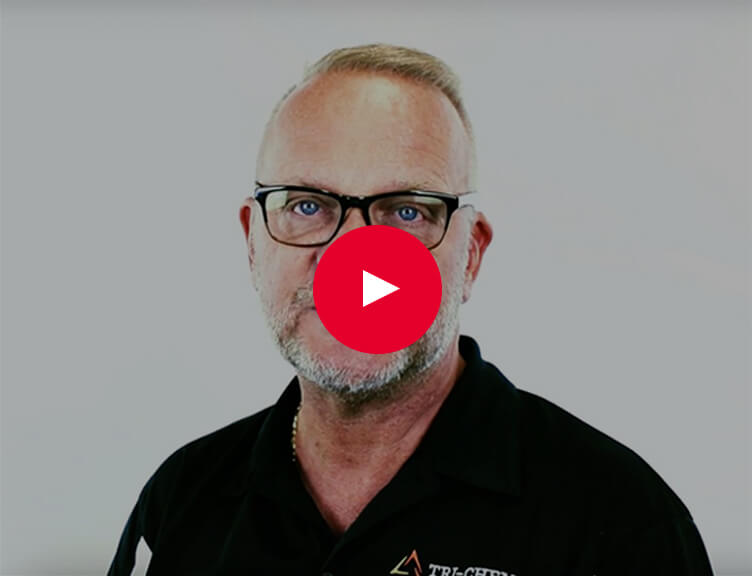One of the most common questions we receive is “why do I have bubbles in my floor coating?”. When you boil it down, there are five common mistakes that can cause bubbles in your epoxy floor coating.
1. Don’t Over-Mix Materials
The easiest to understand is over-mixing of materials. Each of our coating products are typically a two- or three-component system designed to be mixed for 2–3 minutes at various RPMs. When you over-mix products, you are whipping air into them. Therefore, when you apply the product to the floor, the air needs to make its way out. If there is too much air, it can sometimes make its way into the dry-film thickness causing bubbles in your floor coating.
2. Prevent Air Movement
The second reason is due to air movement across the floor. Typically as products cure, they create heat. So if there is a heating or air conditioning system that is running during the application of floor coatings, the air blowing across the floor can create bubbles in the finished product.
3. Avoid Carbonation
The most common reason for air bubbles that we see is a concept called Carbonation. After you prep your concrete, whether you do it with a grinder, sanding disk or a shot blaster, you’re tearing the sealer off the top of the concrete. Underneath that sealer, inside the concrete, is air. It takes anywhere from 24–72 hours for that air, or gas, to be released. Consequently, if you do not wait that time period, as you apply a coating that air makes its way up from the concrete into the finished coating.
4. Don’t Dry Roll the Product
Another common reason for air bubbles in your floor coating is dry rolling the product. After applying coatings with a squeegee, you should never take a dry roller cover and roll out the floor. Various nap roller covers have air within them. We recommend saturating your 9″ or 18″ roller cover in the product and then rolling it and make it an extension of your squeegee.
5. Avoid Temperature Variations
The last common reason for air bubbles in your floor is due to temperature variations. This typically happens in warmer climates—Texas, Florida, Arizona and California. If you start your project early and apply your coating in the morning, as the day goes on the air inside the building and the slab temperature increases causing the floor coating to blister.
It is important to make sure your surface is properly prepped to avoid air bubbles, improper adhesion and coating failure. Speak with a Tri-Chem Representative today to discuss the proper steps you should take before applying your next floor coating.
Forget hiring contractors, reduce downtime, and keep your production running smoothly with Tri-Chem’s On-Site Epoxy & Urethane Training Program. Train your entire staff to prep, patch, coat and seal. → Sign Up


